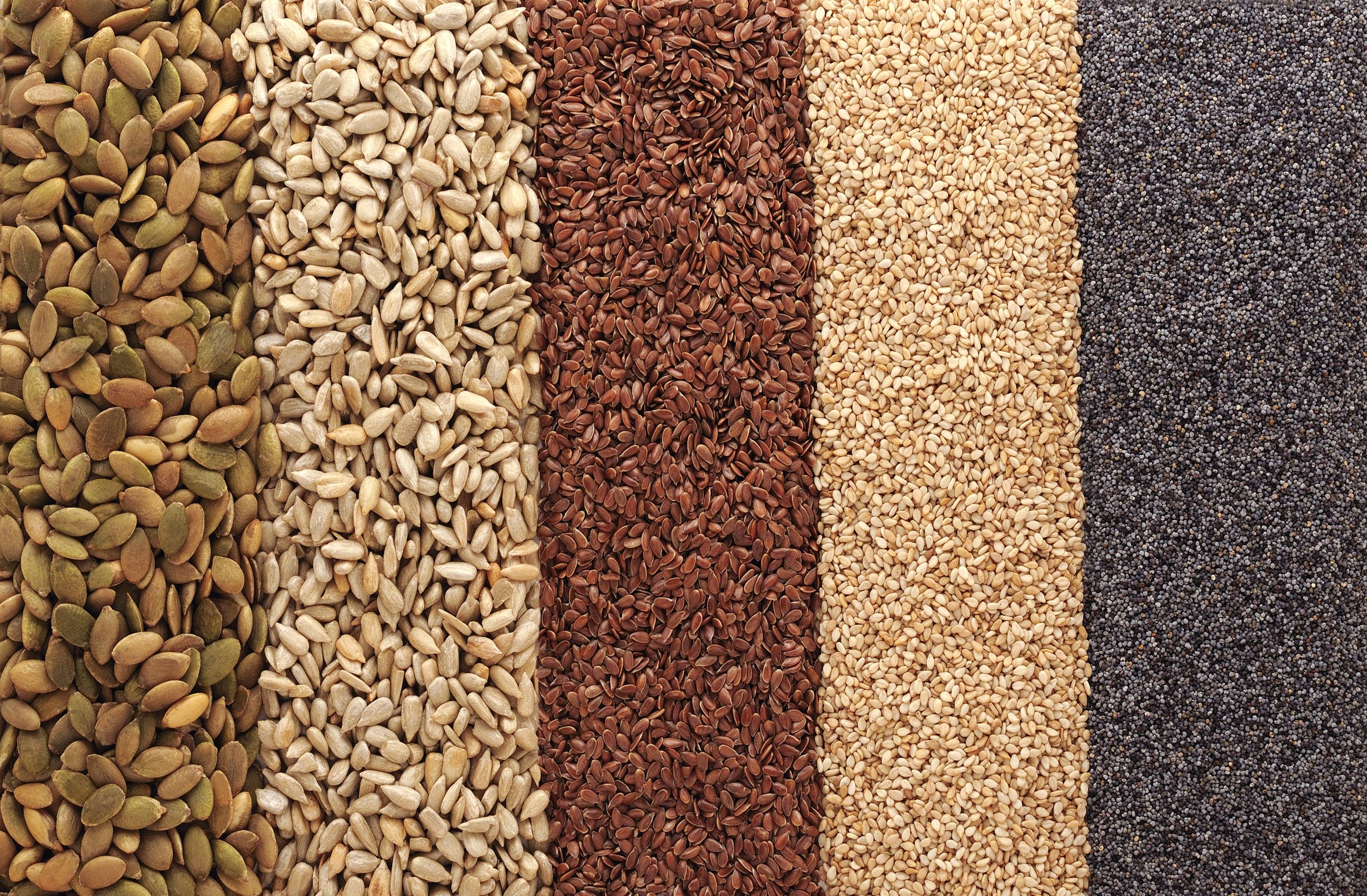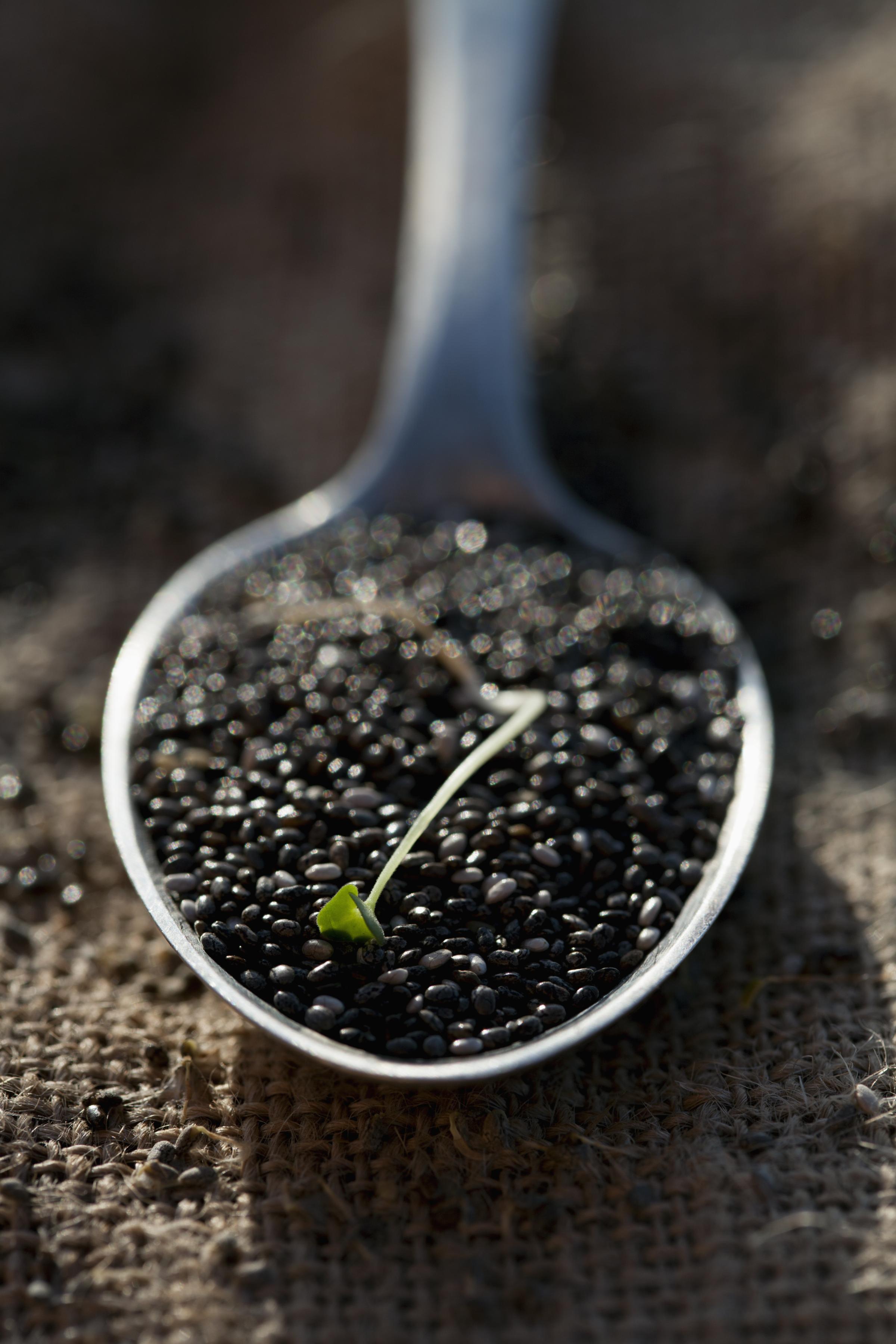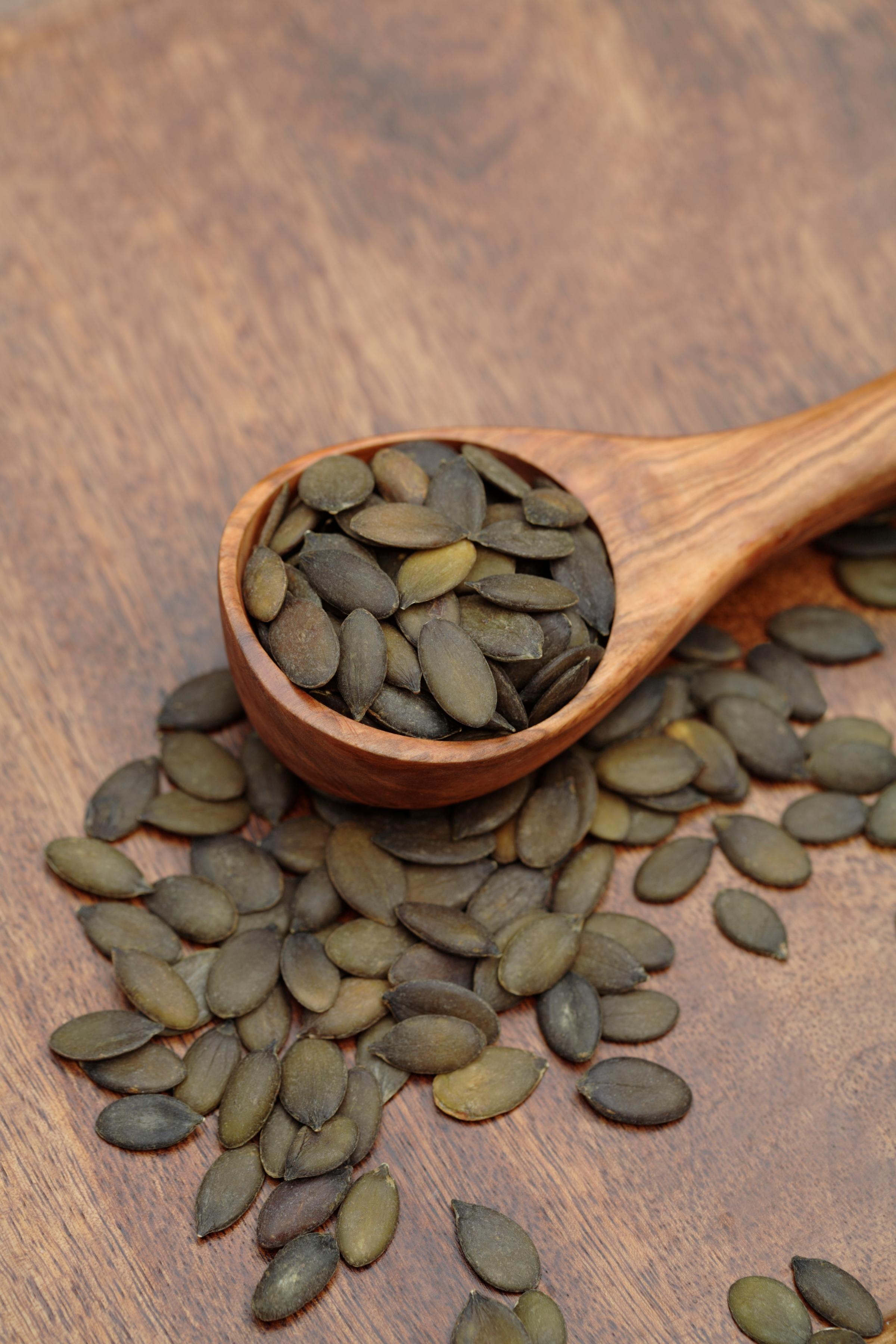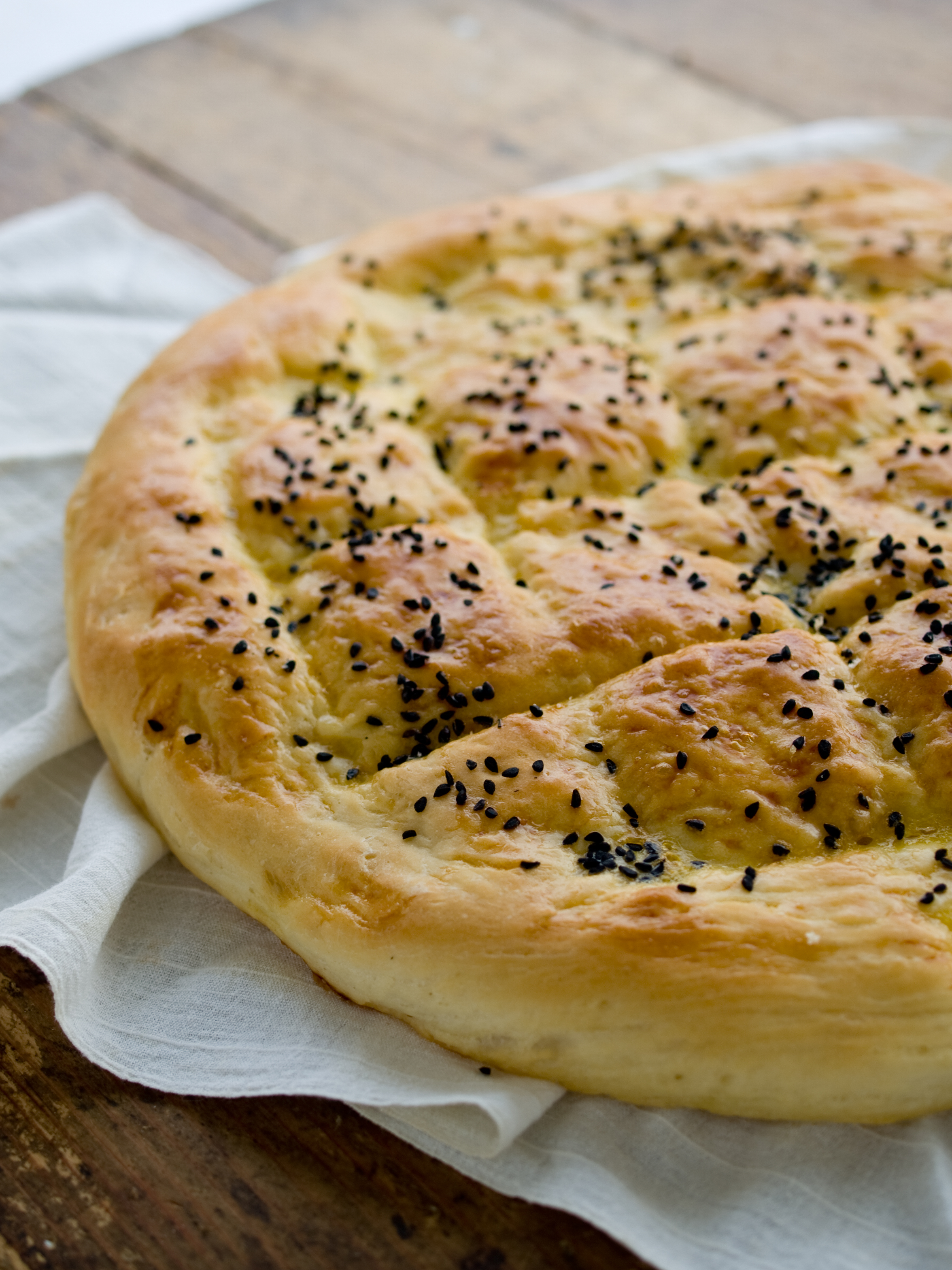
When it comes to nutrition-dense superfoods, seeds are having a bit of a moment. But do they deserve their health halo? “There is an obsession with healthy fats, protein and fiber—it’s like the trinity—and seeds have all three,” says Dawn Jackson Blatner, a registered dietitian in Chicago, Illinois. Of course, shortly behind every health food trend are enterprising food companies quick to sell you packaged foods that contain them—making it tough to tell what’s truly good for you and what isn’t.
Here’s a quick primer on six seeds that will help you separate the hype from truth:
Chia

What’s good: Chia’s evolution from punch line to power food has finally earned the tiny seeds some respect. Packed with 10g of fiber and nearly 5g of protein per ounce (just under 3 tablespoons), the seeds — which come from a plant in the mint family — can absorb up to 10 times their weight in water, making for a fun addition to everything from puddings (think tapioca without all the sugar) to pancakes. Chefs at the Cleveland Clinic even add the seeds to meatballs for extra bulk and flavor, says Kristin Kirkpatrick, a registered dietitian at the Ohio hospital. Sold both in big bags and small, single-serve packets for mixing into smoothies, the seeds are also a good source of calcium, Omega-3 fatty acids and phosphorous.
What’s not: Assertions that this ancient seed can lower blood pressure and make you lose weight have not been proven. Chia doesn’t come cheap either: At $12.99 a pound at my local market, it costs more than twice as much as most other seeds.
Hemp
What’s good: Hemp is a variety of cannabis plant, but the only high these seeds will give you is a nutritional one. They’ve got more protein (about 10g per ounce) than any other seed we can think of, making them a great alternative to animal protein. “For adding protein to a smoothie, I am going to go for hemp seeds,” says Blatner. And because protein takes longer to digest than carbs, they may help you feel full longer. Bonus: Each ounce contains three-quarters of the daily recommended Vitamin E and nearly a third of the recommended zinc to help boost your immune system.
What’s not: Search on “cannabis cures cancer” and you’ll find a large and ardent contingent who believe that cannabis, particularly in its oil form, is a magic elixir. Not only is this claim not proven by scientific studies, but the cannabis oil promoted is not the same as the oil made from hemp seeds, which is commonly found in health stores.
Flax
What’s good: An ounce of these slightly nutty seeds contains nearly 8g of fiber along, 12g of fatty acids, and more than a quarter of your daily recommended magnesium, which helps boost energy. The fiber helps with digestion, and there’s also some evidence that flax seeds can lower high blood pressure and cholesterol. Available in either brown or golden varieties, both are equally nutritious.
What’s not: Unlike other seeds, just sprinkling a handful of these bad boys on your yogurt won’t yield their full benefits. As Blatner notes: “Flax seed is best in its ground form so we can get the nutrients out of its shell.” Due to flax seeds’ high oil content, you should refrigerate ground seeds (as well as flaxseed oil).
Pumpkin

What’s good: For a tasty snack you can enjoy a la carte, roasted pumpkin seeds – also known as pepitas – are the hands-down winner. But where pumpkin seeds really shine is in the kitchen: found in everything from pesto to pipian verde, they’re one of the most versatile seeds you can buy. The green seeds are high in fat (14g per ounce) and relatively low in fiber (2g), but make up for it with nearly 10g of protein and a slew of minerals, including half or more of the daily recommended doses of copper, magnesium, manganese and phosphorous. They’re also a close second to hemp when it comes to zinc. Pumpkin seed oil has also been shown to relieve symptoms caused by an enlarged prostate – a common condition for men over 50.
What’s not: Pepitas are so delicious that it’s tempting to eating too many. Kirkpatrick, RD, of Cleveland Clinic’s Wellness Institute recommends no more than a handful a day, which contains about 160 calories. If you’re worried about your salt intake, consider buying a mix of salted and unsalted pepitas, then mix them together – and enjoy!
Sesame
What’s good: “They’re kind of overlooked because people don’t know what to do with them,” says Kirkpatrick, “but they’re high in zinc, which helps immune health.” Per ounce, the seeds, which are also known as benne seeds, have 5g of protein, 4g of fiber and contain more than a third of the recommended copper (which we need for energy and collagen production) and manganese (which supports bone health). They’re also a good source of calcium, magnesium and iron.
What’s not: Although seed allergies are fairly rare overall, sesame seed allergies in particular are on the rise, with an estimated 0.2% of the population (about half of those who are allergic to cow’s milk) affected in areas where the seeds are available. Chances are you and your kids will be fine, but use caution when introducing the seeds to those who have never tried them.
Nigella

What’s good: Native to Southwest Asia, nigella seeds are popular in Indian cuisine but have also been used for centuries as a traditional treatment for a broad range of ills, including pink eye, the flu, colic and congestion. Commonly referred to as black seed, kalonji or black cumin, the seed is also sold in an oil form at stores like Whole Foods. An ounce contains 11g of fiber, 5g of protein and 4g of fat, and is a good source of calcium, magnesium and iron.
What’s not: Nigella has been touted as “a remedy for everything but death”—including Type 2 diabetes, high blood pressure and cancer. But as dietitian Amy Jamieson-Petonic points out, “Some limited research has been done, but more needs to be completed before concrete recommendations can be made.” What’s more, the oil form does not contain the dietary fiber or protein found in the whole seeds, so if you want the full benefits you need to eat the whole seed.
More Must-Reads from TIME
- Donald Trump Is TIME's 2024 Person of the Year
- TIME’s Top 10 Photos of 2024
- Why Gen Z Is Drinking Less
- The Best Movies About Cooking
- Why Is Anxiety Worse at Night?
- A Head-to-Toe Guide to Treating Dry Skin
- Why Street Cats Are Taking Over Urban Neighborhoods
- Column: Jimmy Carter’s Global Legacy Was Moral Clarity
Contact us at letters@time.com